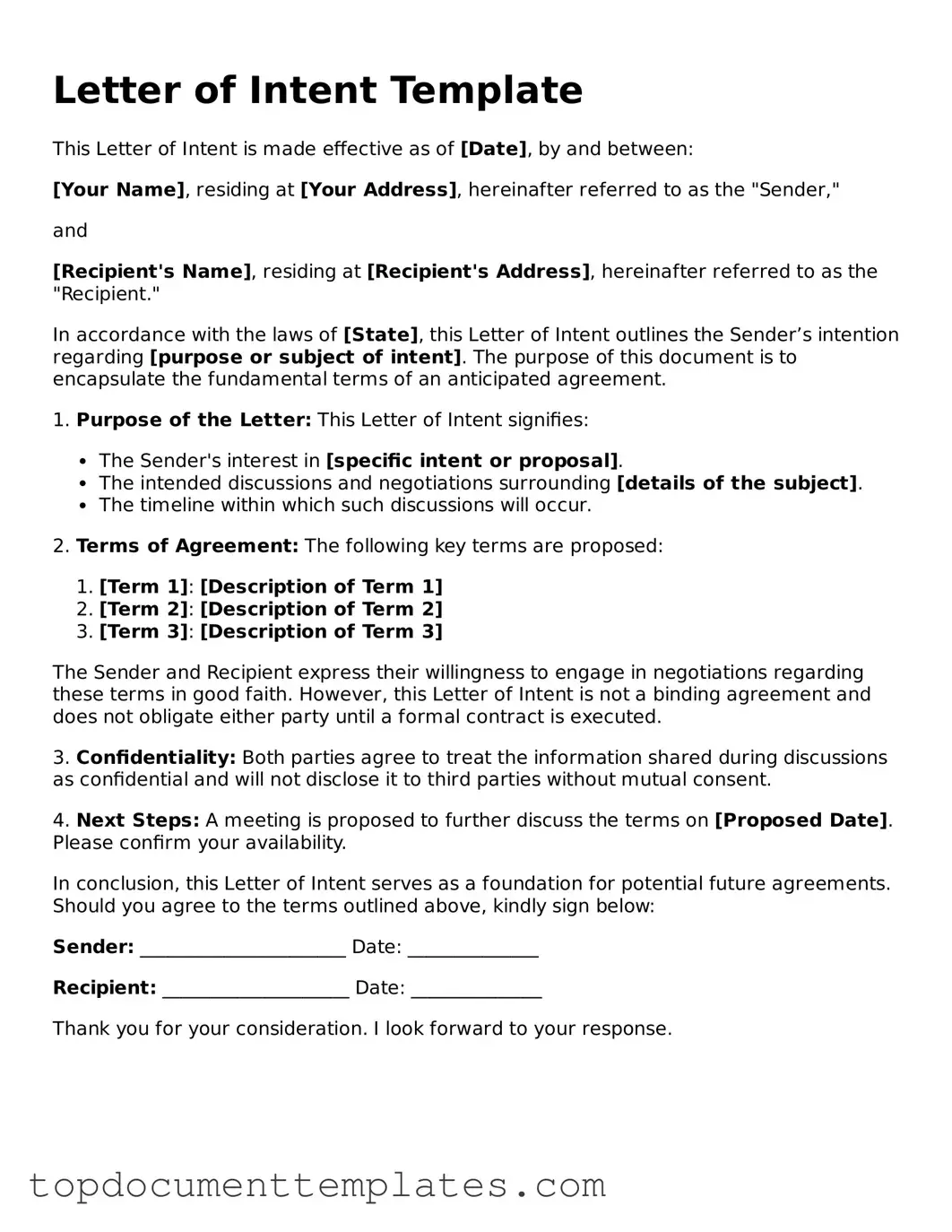In the realm of business transactions and negotiations, the Letter of Intent (LOI) serves as a crucial preliminary document that outlines the intentions of the parties involved before entering into a formal agreement. This document typically highlights key elements such as the scope of the proposed deal, the terms and conditions that are under consideration, and any timelines or deadlines that may apply. Often used in various contexts, including real estate deals, mergers and acquisitions, and partnerships, the LOI can establish a framework for further discussions while signaling a commitment to move forward. While it may not carry the binding force of a contract, it reflects the seriousness of the parties’ intentions and can serve as a basis for drafting a more detailed agreement. Additionally, it often includes provisions for confidentiality, exclusivity, and the handling of sensitive information, ensuring that both parties are protected as they navigate the complexities of their negotiations. Understanding the nuances of the Letter of Intent is essential for anyone looking to engage in significant business dealings, as it sets the stage for future collaboration and success.
